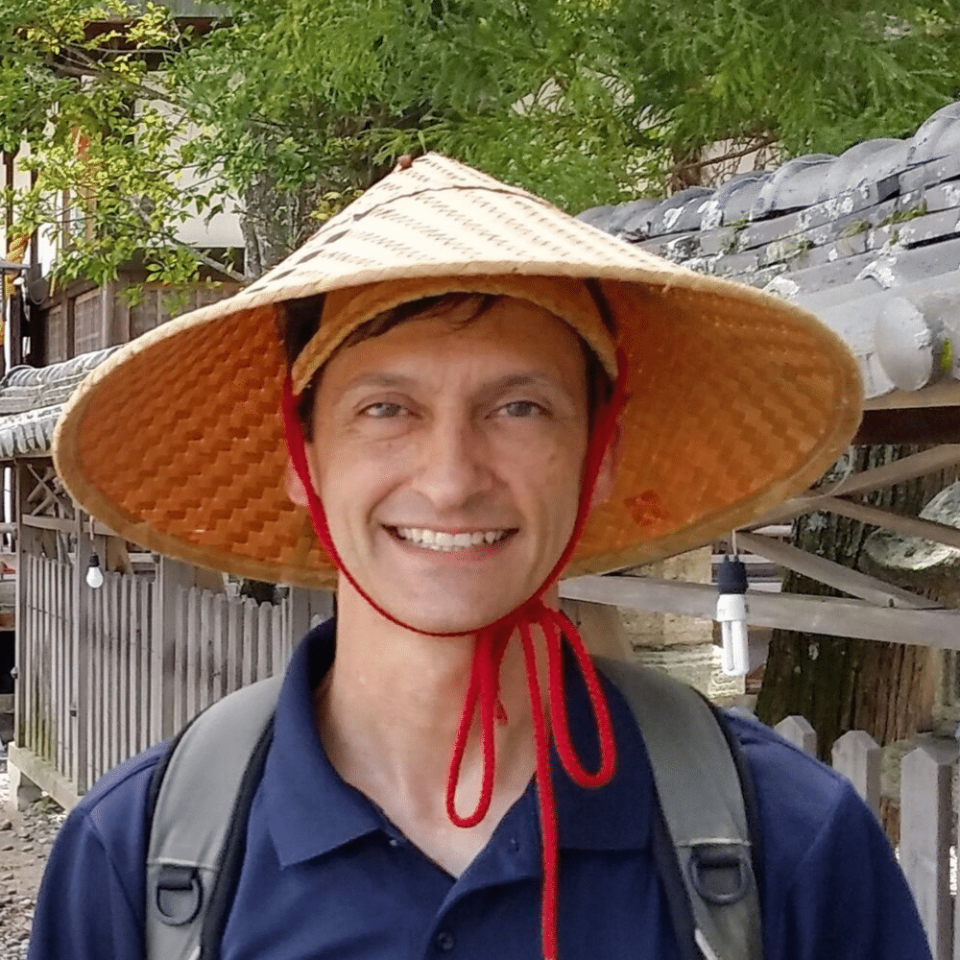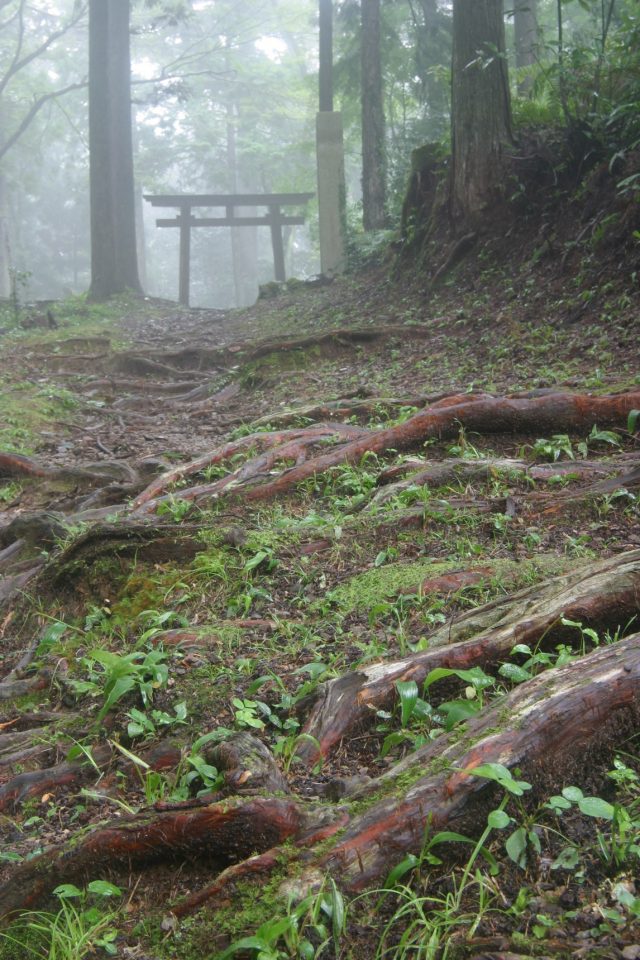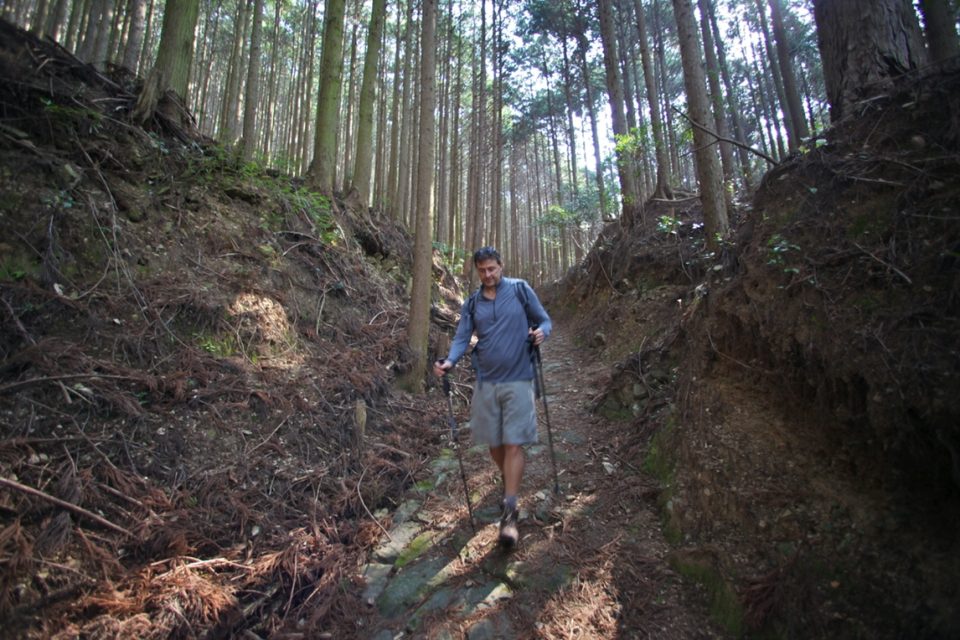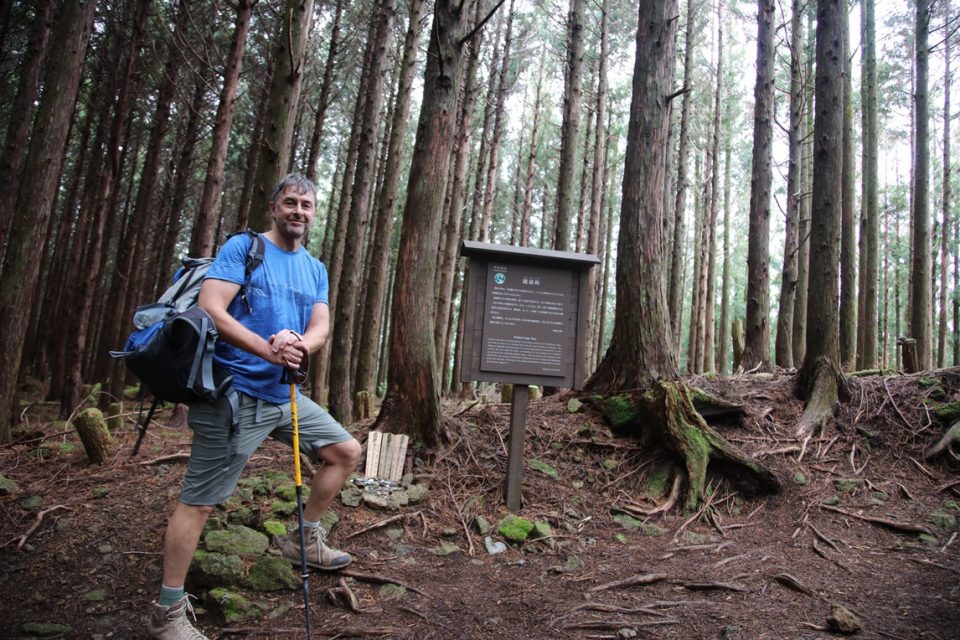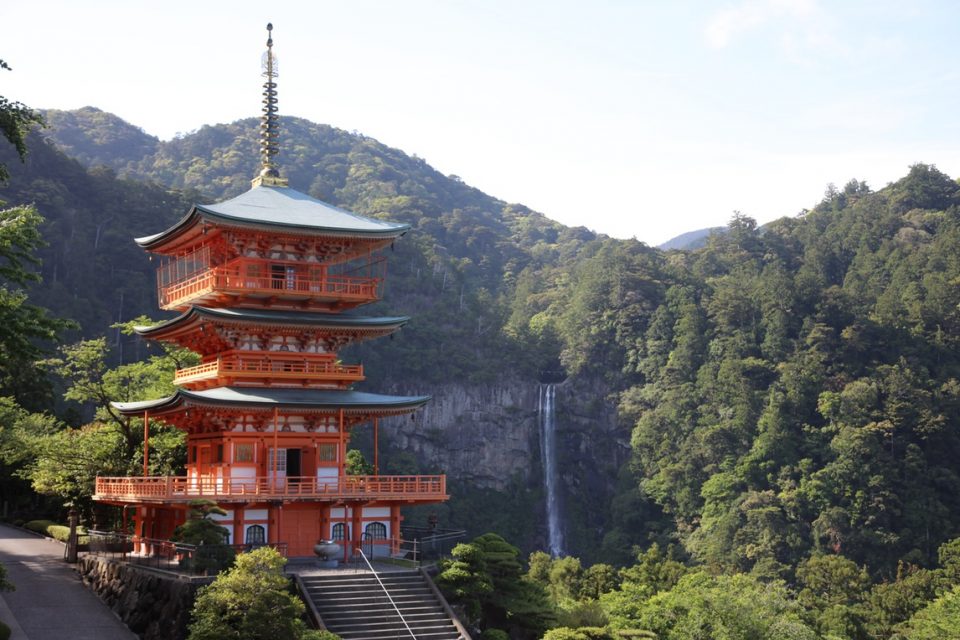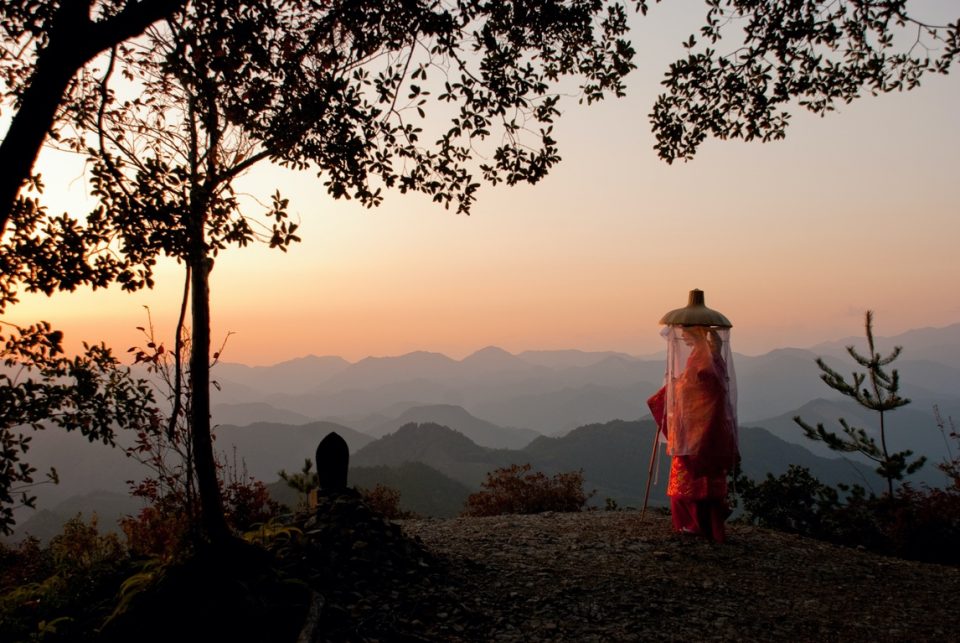length
10 Days
difficulty
Challenging - Strenuous
trip cost
From $4950 pp
Nature Immersion
Cultural Interest
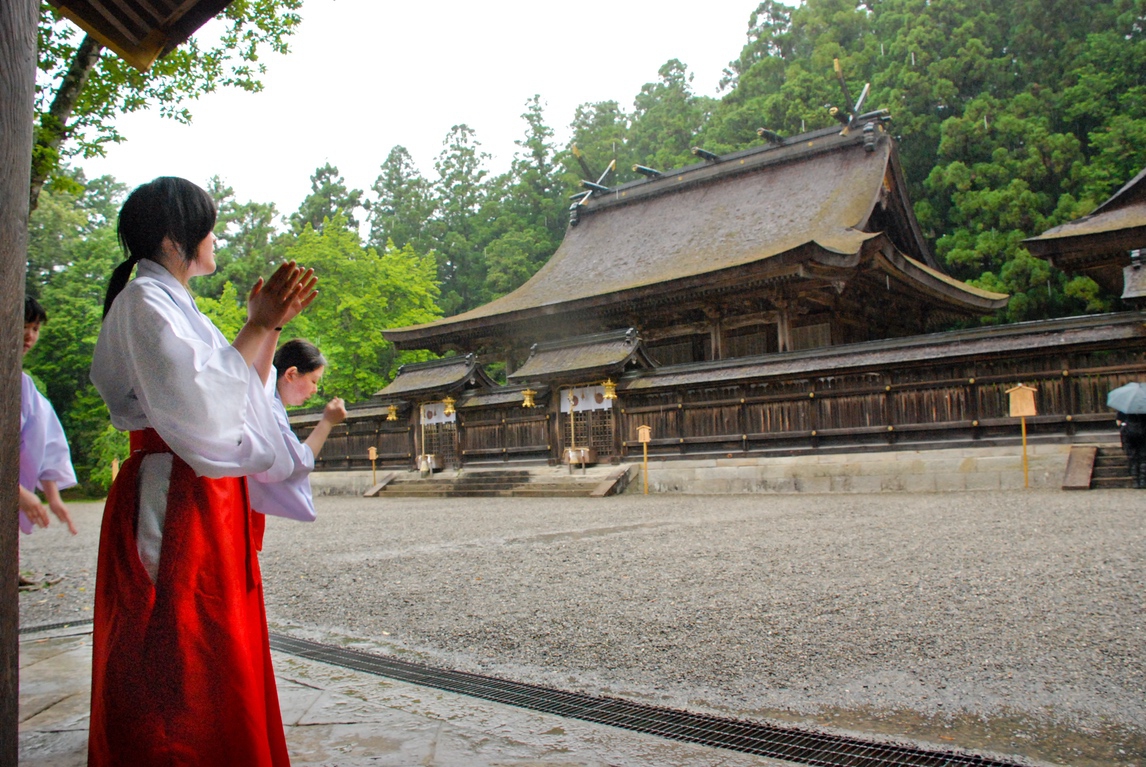
Highlights
Get Ready For
- Gain a great understanding of this ancient pilgrimage trail
- Hike the Nakahechi route of the Kumano Kodo
- Journey along the Kumano-gawa river in a traditional boat
- Learn about traditional daily Buddhist rituals while staying at a temple in Koyasan
- Enjoy an immersive experience staying in local ryokans with warm, local hosts
- Be enlightened by the experience, enthusiasm and knowledge of your local guide Mike Rhodes

History
Over 1000 years
The trails of the Kumano Kodo are a series of ancient pilgrimage routes, dating back over 1000 years, in Japan’s beautiful Kii Peninsula, an area also strongly associated with nature worship. At one time Japan’s Imperial family and former emperors made the pilgrimage trips from Kyoto to the shrines of Kumano, one of Japan’s most sacred sites. The Kumano Kodo’s rugged, forested mountains, quiet rural valleys, rivers and waterfalls provide a spectacular backdrop for hikers. Arriving at our destination each day, the traditional local guesthouses offer reviving onsens and wonderful local food.
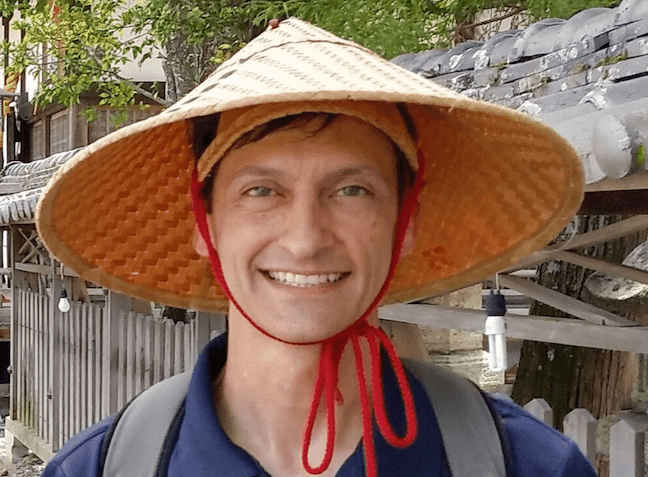
Your Trip leader
Mike Rhodes
Your guide Mike Rhodes lives in this region and knows it intimately. Mike loves to share the sacred, ancient heart of Japan, with everyone he can and loves not only the people and the forests, but its secrets, its mythology, its goblins, legends and heroes. After more than 20 years living, working, and rearing a family in Japan, Mike is still exploring, still telling stories, still wandering and waiting for the next guest with whom to share a tale or two.
Itinerary
Daily details
The best way to reach Kii-Tanabe is by train – there are frequent trains from Kansai Airport, Osaka and Kyoto travelling southwards to Kii-Tanabe (train tickets not included and can be purchased locally). Here the railway line parallels the coast and avoids the steep mountainous interior. Train travel from Osaka to Kii-Tanabe takes just over 2 hours and from Kyoto approximately 2.5 to 3 hours. Kansai International Airport (KIX) is the closest to this area.
Kii-Tanabe is the gateway town to the Imperial Route of the Kumano Kodo and a city surrounded by the Pacific Ocean on one side and mountains on the other. The town is also home to the Tanabe Tourist Information Center – you will meet your guide and have a tour orientation here, scheduled for the afternoon. This evening we will be staying in an eco-tourism complex a few kilometres from the town centre. There is time to hire a bike or go for a stroll amidst the orange and ume orchards.
Meals: D
After checking out this morning, we will transfer to Takijiri, where we commence our walk. Our guide will lead you up the first section which will be a climb from Takijiri-oji to Takahara, a rural hamlet on a ridge, noted for its ancient shrine surrounded by giant kusu-noki, or camphor trees, and a spectacular view over the surrounding Hatenashi mountain ranges. Reminders of the past, including Buddhist statues and oji shrines, line the route along the ancient highway as you climb upwards.
Leaving Takahara behind, we head further into the mountains along the old trail, past bamboo forest and then into the pencil pine. We continue to pass by reminders of the old highway, including an ichirizuka distance marker and the sites of old former tea houses, which provided rest and shelter to pilgrims up until the early 20th century. Continuing on, we crest the Hashiori-Toge pass after a short climb. The trail then descends past the Three-Fold Moon viewing area from where it is a short climb to the small but famous Gyuba-doji statue. This ancient statue shows Kazan, one of the first abdicated emperors to pilgrimage to Kumano, sitting astride both a horse and a cow. Our descent takes us along a cobbled path and staircase to Chikatsuyu, a small village and one of the few places where you can get limited supplies or drinks. This is the location of our accommodation for the evening.
Meals: B, L, D
Today you’ll take a short bus ride from Chikatsuyu to Doyukawa-bashi, where you’ll commence the day’s hike. The walk climbs over a number of passes and reducing the distance a little enables us to enjoy the challenges of the hike while learning tales and stories of the past from our guide. There are few facilities on the first part of today’s route, which is through the forest, before eventually leading us to the shrine at Hosshinmon-oji. From here you will carry on down into the valley to Hongu. Continuing on, we will pass through small settlements and have our first glimpse of the great Kumano Hongu Taisha Shrine and the giant torii gate called Oyunohara in the valley below. Your guide will help direct you accordingly.
Kumano Hongu Taisha is the main shrine in the area, to which all roads in the Kumano Kodo pilgrimage lead. A long stone staircase leads to the sacred grounds of the shrine, located on a ridge and surrounded by giant cedar and cypress trees. After looking around the impressive shrine we will jump on a local bus for the short journey to our evening destination, a charming little hot spring village. There will be more time to fully explore this area on day 7.
Arriving at our overnight location is a treat for tired walkers as the steam billows from the thermal rivers and there is the promise of a relaxing onsen after your exertions. The onsen thermal hot spring baths are an important part of the Kumano Kodo traditions with pilgrims performing hot water purification rituals in preparation for visiting the shrine. For our group, it will be more a preparation for a delicious Japanese meal in our accommodation.
Meals: B, L, D
After a short bus ride to reach the Kawabune Boat Tour Centre, we embark on a traditional boat ride down the Kumano-gawa River. For over 1000 years pilgrims have been making the journey to Kumano and the Kumano-gawa River has been a vital section of the pilgrimage route between Kumano Hongu Taisha in Hongu and Kumano Hayatama Taisha in Shingu. We will journey in a traditional wooden flat-bottom boat as pilgrims have been doing for centuries.
The boat tour finishes in Shingu, close to the Kumano Hayatama Shrine, one of the sacred Grand Shrines of the Kumano region. Although the shrine buildings were rebuilt recently, the Hayatama Taisha has occupied the same location since at least the 12th century and the area has been a site of nature worship for much longer. In fact, the nature in and around the shrine is an integral part of this Grand Shrine’s precincts and annual rituals. The ancient 800-year-old Nagi-no-Ki tree highlights the area’s deep tradition of nature worship and is considered a sacred tree of God. Small dolls made from the seeds of this tree are believed to generate luck with the opposite sex or a happily married life to couples. We also recommend visiting the nearby Gotobiki-iwa, a gigantic rock worshipped as a sacred object and located halfway up Gongen Mountain. Is it believed that it was here that the first Kumano deities descended to earth from the heavens. At the base of this monolith is the Kamikura-jinja shrine. Our guide will provide further insight into the fascinating sights and history of this area.
After looking around Shingu, we will catch a bus to Nachi Station and on to Nachisan (paid locally), our overnight location. Visit the brightly coloured Kumano Nachi Taisha shrine, another of the three grand shrines of Kumano. Also nearby is the wonderful wooden Seiganto-ji temple and the spectacular Nachi-no-Otaki waterfall, which is the highest in Japan and can be seen from far out on the Pacific Ocean. If time allows we may also like to walk an extra section of the Kumano Kodo trail between Nachisan and Daimon-Zaka. The trail is an impressive cobblestone staircase lined with centuries-old trees and a beautiful walk, so well-worth the stroll.
Meals: B, D
Today will be one of your more challenging days as the Ogumotori-goe is the first day of a 2-day trek from Kumano Nachi Taisha to the Hongu area. It is one of the toughest sections of the Nakahechi trail as this is where the trail reaches its highest point at over 800m. It’s a big day’s walk so it will be an early start to the day. The trailhead starts immediately to the right of the Kumano Nachi Taisha Grand Shrine and we climb upwards passing the Noboritate-jaya teahouse remains. As you approach the Funami-toge pass you have extensive views behind you of the Pacific coastline. Soon we will walk through the Moja-no-Deai, ‘Abode of the Dead’. It is believed that the souls of the dead gravitate to these higher mountains, where spirits inhabit this section of the trail. The walk continues through forest and along ridges, the path ascending and descending, until we come to the Echizen-Toge pass after which the steep descent to Koguchi begins down the Dogiri-zaka slope.
Dogiri-zaka can be directly translated as ‘Body Breaking Slope’ and is an appropriate name for this 5km downhill section that descends 800m from the Echizen-toge Pass. At the bottom, we’ll arrive in the tiny hamlet of Koguchi where our accommodation awaits. It is said that when the owners of teahouses saw pilgrims approaching from far off in the distance, they would start to cook mochi rice cakes and boil water for tea, to have things ready to serve just as the pilgrims would arrive at the teahouse.
Meals: B, L, D
Today’s walk is over the Kogumotori-goe section; by comparison an easier trek with a climb and descent over a pass, and is mostly in the forested mountains with some nice ridge-walking sections.
The trail starts fairly steeply on the first section, steeper, when we climb towards the Sakura-jaya teahouse remains and soon after the Sakura pass. The trail then descends before ascending along a ridge until reaching the highlight of today’s walk; the Hyakken-gura pass, where a beautifully positioned Buddhist statue sits on a hilltop, with a backdrop of the most spectacular vista of the trip. The impressive Hyakken-gura lookout surprises walkers with a lovely panoramic view of the 3600 peaks of Kumano. Take a moment to enjoy this stunning view, as pilgrims have been doing for over 1000 years.
The views from the Sakura-jaya teahouse remains, down to the valley and across the mountains are impressive. The trail descends gradually on a forest track into the valley of Kumano Hongu Taisha. From here we can walk a little further or catch a bus to Kawayu Onsen where our overnight accommodation is located.
Meals: B, L, D
Today is an opportunity to return to Hongu village for further explorations. If the group is keen to stretch your legs a little, your guide may lead you on a short hike back to Hongu on the Dainichi-goe route from Yunomine Onsen – this is a steep but delightful walk, passing some remarkable old carved statues at Hanakake Jizo, overgrown by tree roots.
Hongu village is home to the Kumano Hongu Taisha, one of the Kumano Sanzan, three grand shrines of Kumano, and head shrine of over 3000 Kumano shrines across Japan. Kumano was said to be the entrance gateway to the land of Yomi, the ‘other world’, which spirits travelled to in Japanese mythology. Across the Kumano Hongu Shrine is the Kumano Hongu Heritage Centre, featuring a diversity of exhibitions on the Kumano Kodo – and your guide will share further insights. Just nearby the centre you will find Oyunohara, the largest torii shrine gate in the world at 34m tall, signifying the division of the secular and the spiritual worlds.
You may also visit the tiny Tsuboyu onsen in a wooden cabin at the centre of town in Yunomine Onsen, which is the only UNESCO world heritage listed spa and the oldest in Japan at 1200 years old! The bath can be booked for a 30-minute private bathing and works on a first come first serve basis.
Meals: B, D
This morning we take the bus which connects the UNSESCO World Heritage sites of Hongu and Koyasan. This route offers spectacular panoramic views and the road the bus takes is known as the ‘Koya-Ryujin Skyline’.
We will arrive into Koyasan in time for lunch and some exploring prior to checking in to our temple accommodation.
Staying in a Japanese Buddhist temple is a unique opportunity to be part of the daily rituals and spiritual life of Koyasan. You will have a comfortable room and be served vegetarian Buddhist cuisine, Shojin Ryori. ‘Shojin’ is a Buddhist term that refers to asceticism in pursuit of enlightenment, and ‘ryori’ means cooking. There are surprising tastes and not only is it delicious but good karma too!
Meals: B, D
This morning, your guide will lead you along the historic Women’s Pilgrimage Route. There are three sections of this walk totalling about 16km and your guide will inform you of your options and direct access points into Koyasan, if you choose to walk part of the route only.
This is a really scenic walk with views to the lower villages and passing the Great Gate and Okunoin. This route has been likened to a lotus flower as it weaves a course encircling the mountain passing by each of the seven traditional entrances to the sacred precincts. Prior to 1872 female devotees weren’t allowed to enter its gates.
One of the most interesting areas is Okunoin, which has at its centre the mausoleum to Kobo Daishi, the founder of the Shingon Buddhist sect and one of Japan’s most significant religious figures. This is set in a giant cypress forest surrounded by 300,000 graves of his followers and is an awesome sight especially if you walk it at night time when the lonesome paths are lit by stone lanterns – very eerie!
Meals: B, D
Following the morning ceremony and breakfast, you will farewell your guide and depending on your plans, may have time to continue exploring the village of Koyasan or perhaps join the monks for a meditation session. After checking out of your temple lodging, you will catch the local bus to Koyasan station and depart Mt Koya by the funicular cable-car before travelling by train to your onward destination.
Meals: B
Map
Explore
Kii-Tanabe
Kii-Tanabe is the gateway town to the Nakahechi (‘Imperial Route’) of the Kumano Kodo. It is surrounded by the Pacific Ocean on one side and mountains on the other. From here, it’s a 40-minute bus ride to the trailhead at Takijiri-oji.
CLICK ON A PIN TO REVEAL INFORMATION ABOUT THAT LOCATION
Takijiri
Takijiri is the traditional starting point of the Kumano Kodo walk and where you will find the Kumano Kodo Kan Pilgrimage Centre. The trailhead is behind the Takijiri-oji, which is considered to be where the passage into the precincts of the sacred mountains begins.
Chikatsuyu
The small village of Chikatsuyu sits at the base of the mountain trail at the Hidaka-gawa River. Inns and a couple small restaurants run along the main road, which runs east and west. The area features an ancient weeping cherry blossom tree, an ancient graveyard for warriors, a local experience centre and Chikatsuyu-oji.
Tsugizakura-oji
At the impressive Tsugizakura-oji shrine there are giant Nonaka-no-Ipposugi cedar trees. Some have a circumference of 8m and are believed to be up to 800 years old. This shrine, along with its trees, was scheduled to be demolished in 1906 as part of the government’s shrine consolidation program. It was saved by Minakata Kumagusu, an eccentric genius researcher and avant-garde environmentalist.
Hosshinmon-oji
Hosshinmon-oji is one of the most important sites on the Kumano Kodo pilgrimage route. It marks the outermost entrance into the divine precincts of the Kumano Hongu Taisha.
Kumano Hongu Taisha
Kumano Hongu Taisha is one of the three grand shines of Kumano and the head shrine of over 3000 Kumano shrines across Japan. A long stone staircase leads to the sacred grounds of the shrine, located on a ridge and surrounded by giant cedar and cypress trees. On the riverbank is Oyunohara, the original shrine ground of Kumano Hongu Taisha, marked by an immense Torii gateway – the biggest in Japan!
Yunomine Onsen
Yunomine is a quaint little collection of inns tucked into a small valley deep in the heart of the sacred mountains of Kumano. It was discovered about 1,800 years ago, and it is thought to be one of the oldest hot springs in Japan. The onsen culture in Japan is very rich, but the strong connection with spiritual culture found in Yunomine is unprecedented.
Kawayu Onsen
On the north side of this hot spring town is a diverse collection of places to stay. On the south side of the river is a green forested mountainside. The defining feature of Kawayu Onsen is the Oto river. In the evening, enjoy a soak while watching the warm mist from the river rise slowly into the clean mountain air.
Hyakken-gura pass
At the Hyakken-gura pass there is a beautifully positioned Buddhist statue on a hilltop with a backdrop of the most spectacular vista of the trip! The impressive lookout surprises walkers with a lovely panoramic view of the 3600 peaks of Kumano.
Koguchi
The small mountain village of Koguchi is nestled along the Akagi-gawa River almost directly in-between Hongu and Nachi. It is refreshing to put your feet in the river after a hot day’s hike.
Nachisan
Nachisan is where you’ll find the brightly coloured Kumano Nachi Taisha shrine, the wonderful wooden Seiganto-ji temple and the spectacular Nachi-no-Otaki waterfall, which is the highest in Japan and can be seen from far out on the Pacific Ocean. The extra section of trail between Nachisan and Daimon-zaka is an impressive cobblestone staircase lined with centuries-old trees.
Shingu
Shingu is where Kumano Hayatama Taisha, one of the sacred Grand Shrines of the Kumano region, is located. Although the shrine buildings were rebuilt recently, the Hayatama Taisha has occupied the same location since at least the 12th century and the area has been a site of nature worship for much longer. The ancient 800-year-old Nagi-no-Ki tree highlights the area’s deep tradition of nature worship and is considered a sacred tree of God.
Kumano-gawa River
For centuries, the Kumano-gawa River was a vital section of the pilgrimage route between Kumano Hongu Taisha in Hongu and Kumano Hayatama Taisha in Shingu. Traditional wooden flat-bottom boats carry modern pilgrims down the river, in the same manner as royal and noble families long ago.
Koyasan
The secluded mountain town of Koyasan is surrounded by the eight peaks of Mt Koya and said to resemble a lotus flower. There are 115 temples, including Kongobuji, the head temple of Shingon Buddhism, the stunning vermilion Konpon Daito and Daimon, the majestic entrance gate to this mountain complex. Okunoin has at its centre the mausoleum to Kobo Daishi, the founder of the Shingon Buddhist sect and one of Japan’s most significant religious figures.
Inclusions
What's included?
- Service of a qualified expert guide for the duration of the tour
- 1 night in Kii-Tanabe (twin share, ensuite)
- 3 nights in traditional Japanese guesthouses (twin share, shared bathroom)
- 3 nights in an onsen village in a traditional ryokan (twin share, ensuite)
- 2 nights in a Buddhist monastery in Koyasan (twin share, shared bathroom)
- Daily meals included as listed in the itinerary
- Luggage transfers on the Kumano Kodo on all trekking days and days 4 & 8
- Briefing in Kii-Tanabe at the start of your walk
- RAW Travel luggage tag & buff
- Traditional boat ride from Hongu area to Shingu
- Group taxi transfers to/from the accommodation on days 1 & 2
- Bus ticket from Hongu to Koyasan
- Local bus tickets
- Train tickets to/from Kii-Tanabe and departing Koyasan
- Flights to/from destination
- Travel insurance
- Beverages other than water at meals
- Expenses and items of a personal nature
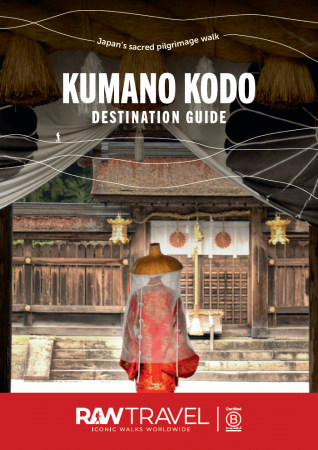
Exclusive Guide
GET INSPIRED
Japan’s ancient Kumano Kodo trails are nestled in the verdant mountains of the southern part of the beautiful Kii Peninsula, just south of Osaka. This lush and rugged area has been considered the abode of the gods and worshipped for centuries.
Our destination guide is bursting with all you need to know about walking the sacred Nakahechi pilgrimage route, the most popular and accessible of all the routes. You’ll love the peacefulness and tranquillity of the trail, the food (so elegant and refined!), the onsens (a cherished Japanese ritual), and the traditional family run guesthouses, full of character and charm.
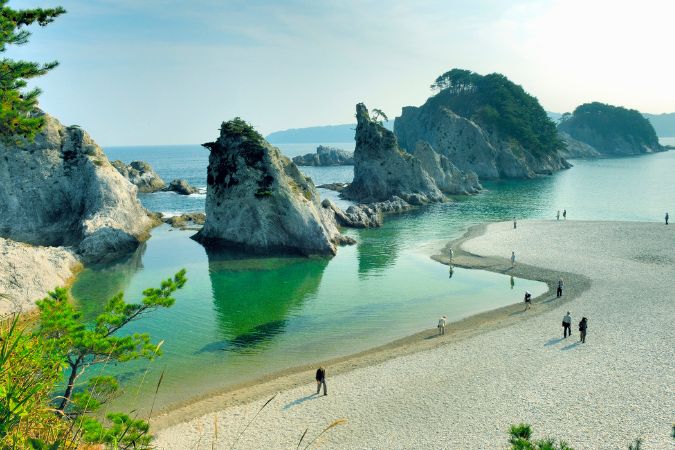
Michinoku Coastal Trail
Michinoku Coastal Trail – Northern Section (Guided)
- Exceptional guided hike along Japan’s newest coastal trail
- Wild and rugged coastlines, pristine inlets, lush forests
- Iconic and picturesque Jodogahama Beach
- Oceanside accommodation and luxury glamping
$5,095.00
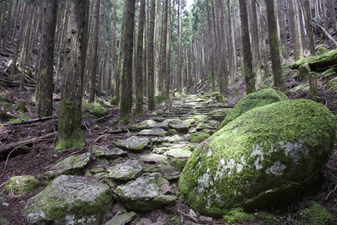
Kumano Kodo
The 7 Day Trail – Kumano Kodo
- Walk the full length of the Nakahechi trail
- Stay in traditional guesthouses
- Gain insights into life in rural Japan and the spiritual history
- Enjoy delicious handmade Japanese food with fresh local ingredients
$2,495.00
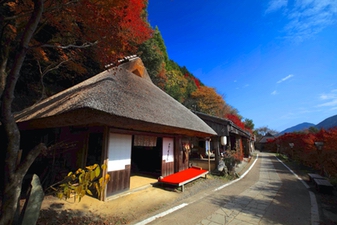
Kumano Kodo
The Autumn Trip – Kumano Kodo
- Stay in traditional guesthouses
- Beautiful, changing colours are a highlight for people on this trek
- Enjoy delicious handmade Japanese food with fresh local ingredients
- A great option for solo travellers or enjoy the company and support of others
$2,790.00
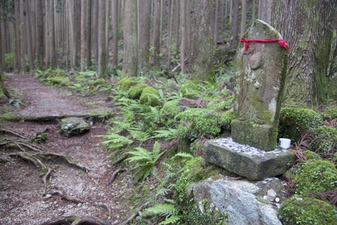
Kumano Kodo
The Extended Trip – Kumano Kodo
- Hike the full length of the Nakahechi route
- Enjoy a day on the challenging Kohechi route
- Journey along the Kumano-gawa river in a traditional boat
- Experience the life of a monk by staying in a Buddhist monastery
$3,650.00
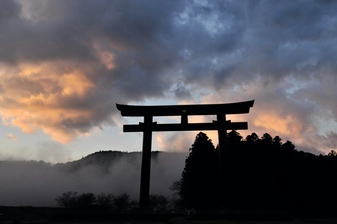
Kumano Kodo
The Highlights Trip – Kumano Kodo
- Stay in traditional minshuku and ryokans
- Enjoy a traditional boat ride on the Kumano-gawa river
- Savour delicious Japanese cuisine
- Visit all 3 Kumano Sanzan grand shrines
$2,250.00
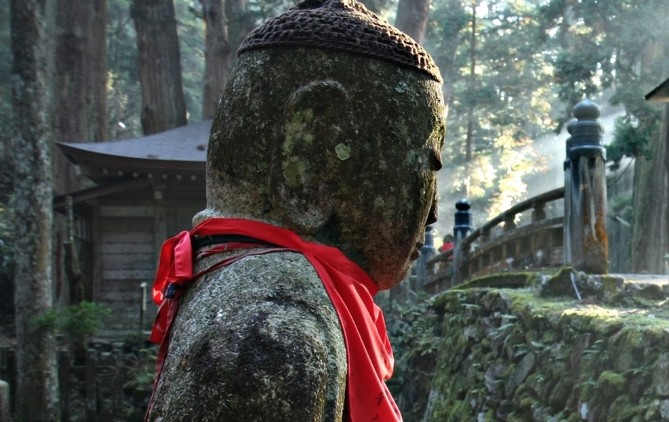
Kumano Kodo
Koyasan and Kumano Kodo
- Beautiful nature walking through rugged, forested mountains, quiet rural valleys and alongside rivers.
- Visit temples, shrines and traditional gardens
- Stay at a Japanese Buddhist temple
- Learn about traditional daily rituals, join a spiritual ceremony
$3,290.00
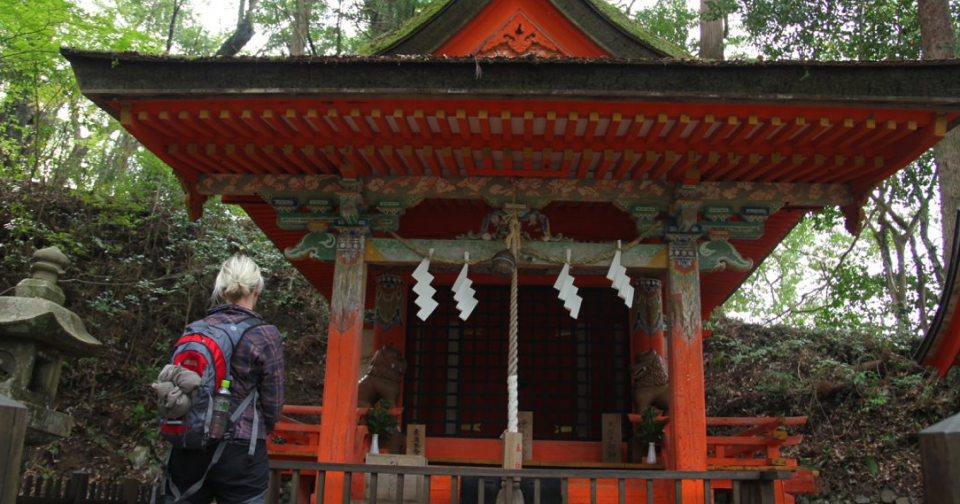
Kumano Kodo
Nakahechi & Kohechi trip – Kumano Kodo
- Challenging hike through the rugged forested mountains
- Walk the full length of both the Nakahechi and Kohechi routes
- Journey along the Kumano-gawa river in a traditional boat
- Stay in a Buddhist monastery in Koyasan
$4,495.00
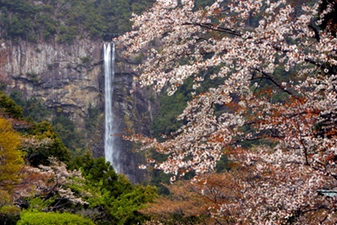
Kumano Kodo
The Spring Trip – Kumano Kodo
- A great option for solo travellers
- Stay in traditional guesthouses
- Spring is a wonderful time to hike the Nakahechi Trail
- Enjoy delicious handmade Japanese food with fresh local ingredients
$2,895.00
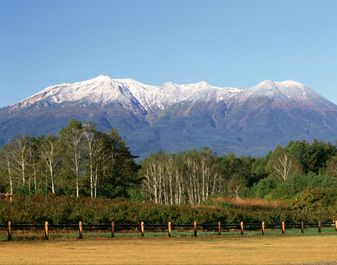
Nakasendo Way
The Group Guided Trip – Nakasendo Way
- Fully guided walk with our qualified Japanese guide
- Dive into the colourful history of the Shogun/Samurai
- Visit 16 of the original post towns from the Nobi plain land to deep in the Kisoji valley
$4,200.00
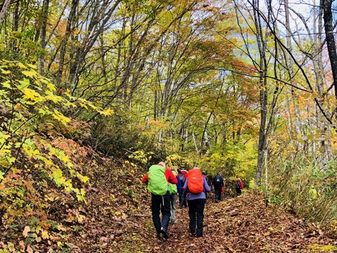
Nakasendo Way
The Group, Self-Guided Trip – Nakasendo Way
- Trek in a group of like-minded travellers
- A journey through the heart of Japan
- Visit Nakatsugawa, Magome, Tsumago, Kiso Fukushima and Narai
$3,250.00
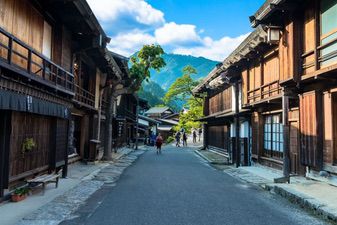
Nakasendo Way
The Highlights Trip with Shimosuwa Onsen – Nakasendo Way
- Visit Shimosuwa, the only hot springs district
- Understand the feudal history with our local guide
- Walk the historical Nakasendo Way through the Kiso Valley
- Visit Nakatsugawa, Magome, Tsumago, Kiso-Fukushima and Narai
$3,095.00
TRIP date selection
when would you like to travel?
Please select your preferred dates for on-demand trips or select a scheduled date for group departures. If you have booked a self-guided trip please understand that because your trip date is on demand and we must check availability of all properties on your chosen dates before it can be fully confirmed




